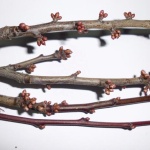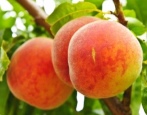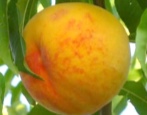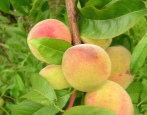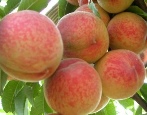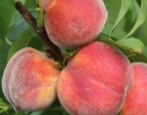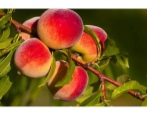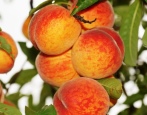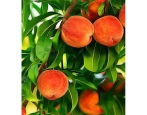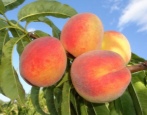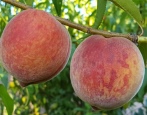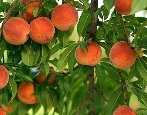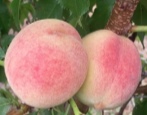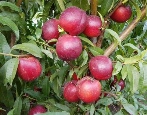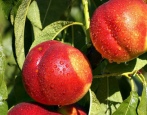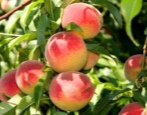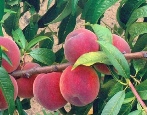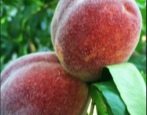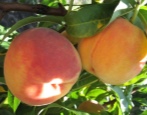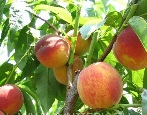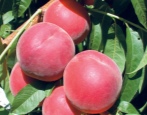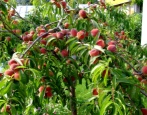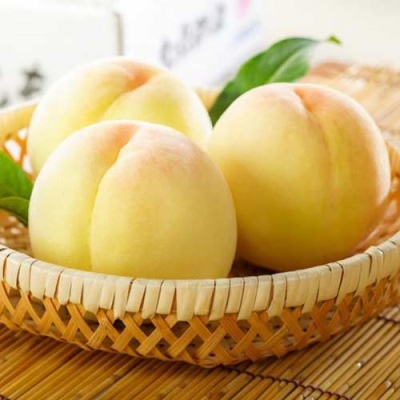
- Authors: Nikitsky Botanical Garden
- Growth type: undersized
- Ripening period: mid-late
- Self-fertility: self-fertile
- Appointment: for fresh consumption
- Yield: high
- Transportability: bad
- Winter hardiness: high
- Fruit weight, g: 145 - 155
- Fruit color: creamy white, with a slight raspberry blush on the sides
Everyone's beloved peaches, southerners and darlings of the sun, "learned" to grow in more severe conditions thanks to the tireless work of breeders. New varieties are grown in the middle lane and colder regions. A striking representative of such "strong men" is the variety White Swan (synonym for White Lebedev), whose fruits are intended for fresh consumption, but many use them for cooking jam and jams. Due to the tendency of the ripe fruit to decay the structure, juices are obtained with pulp, and it is better to cook jam from unripe fruits, then the pieces remain intact. The variety cannot withstand long-distance transportation.
Breeding history
The originators of the variety were the team of breeders of the Nikitsky Botanical Garden.
Description of the variety
A short (2-3 m) tree with a spherical, slightly spreading crown. Young growing shoots are colored in light colors; over time, the thin skin coarsens, acquires a brown color. The branches are covered with dark green lanceolate foliage, slightly concave along the central vein, clearly visible, like its lateral branches. The smooth leaf plate does not have pubescence, the lower part is lighter than the upper one, the end is elongated and pointed, the edges are even, without notches. Peach blooms profusely, snow-white flowers with a strong aroma have long stamens, slightly wavy petals.
Fruit characteristics
Rounded or broadly oval fruits of medium size and weighing 145–155 g have an uncharacteristic color for a peach. Covering - creamy white with a yellowish-pink tint, a hot pink blush occupies a small percentage of the surface. The delicate skin has a strong pubescence, the medium-sized stone is easily separated from the pulp.
Taste qualities
Fragrant white pulp with a juicy and delicate consistency has the property of losing density after full ripening, which makes it impossible to transport over long distances. Harmonious sweet taste reminds honey, acid is almost absent. Tasting score - 4.5 points.
Ripening and fruiting
The variety belongs to the mid-late category - the crop is harvested in the third decade of August. Regular fruiting occurs 4 years after planting.
Yield
The white swan gives excellent harvests - one tree can give 50-60 kg of tasty, healthy and fragrant fruits.
Growing regions
The variety is adapted for the North Caucasus region, Central Black Earth Region, Crimea, but in fact its habitat is much wider. It is grown by gardeners of the middle zone, the Far East, the Urals, Altai, subject to the organization of winter protection.
Self-fertility and the need for pollinators
The white swan belongs to self-fertile varieties, which saves the gardener from searching and planting pollinating varieties. The peach will bear fruit perfectly, even being in the singular on the site.
Growing and care
The southern variety is very picky about sunlight, so the site is chosen on the south side, protected from northern winds and drafts. The white swan does not tolerate wetlands and the proximity of groundwater (no closer than 1.5 m), which must be taken into account when determining a landing site.
All types of stone fruits are bad predecessors - plum, apricot, and so on. This is because plants have common diseases and pests. The most favorable soil is sandy loam and loam with a neutral acidity level. Acidified soils are subject to mandatory deoxidation. To do this, add dolomite flour, chalk, gypsum to the soil.
The optimal planting time is spring in temperate latitudes, autumn in the southern regions. Before the onset of cold weather, the plant must have a time reserve of 1–1.5 months so that the seedling has time to acclimatize and take root. When choosing planting material, preference should be given to two-year-old seedlings with a closed root system. They adapt faster, tolerate changes in environment, nutrition and care more easily.
The plant must have branched shoots, in the amount of at least five branches with clearly visible fruit buds. If the root system is open, then it is necessary to check the quality of the roots, their length (at least 20 cm), viability. Dry roots are a sign of defective material. Quality plants can only be provided by nurseries or specialized stores. It is not worth buying a seedling from the market. There are many known cases when a purchased tree is looked after for years, and in the end they get something else.
Before planting, a plant with ACS is kept in a solution of a root-forming agent, for example, "Kornevin". A planting pit with dimensions of 70x70x70 cm is filled with a drainage layer of crushed stone, pebbles, gravel, broken brick and a support is installed. The distance between the holes is 3 meters.
The excavated soil is enriched with humus, compost or bird droppings, wood ash, complex mineral fertilizers, superphosphate are added and the pit is filled with this mixture. Then the seedling is installed and covered with the remaining earth, while making sure that the root collar remains above ground level. The soil is compacted, the trunk circle is watered abundantly with warm water, the next day the soil is loosened or covered with a layer of peat mulch. Peat can be replaced with straw or cut grass.
A young plant needs regular watering in the first season, with the exception of steady rainy weather. For an adult tree, additional irrigation is arranged only in case of long-term drought. The introduction of nutrients begins from the second or third year, depending on the composition and fertility of the soil. In early spring, the peach is fed with nitrogen, stimulating the build-up of a powerful vegetative mass. During the budding period, the plant needs potassium-phosphorus preparations. In summer, infusion of mullein is watered at the rate of 1: 10. In autumn, the trunk circle is covered with a thick layer of humus with wood ash, or superphosphate and potassium chloride are added.
Spring sanitary pruning helps to rid the crown of broken, affected or frozen shoots. During formative pruning, excess branches growing inward are removed, achieving full ventilation and lighting of the inside of the crown. For the winter, the trunks are covered with burlap or a special net, with roofing felt on top, making sure that the lower part of the protection against rodents is submerged in the ground.
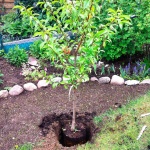
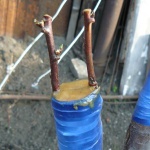
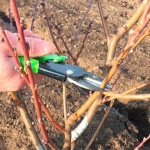
Frost resistance and the need for shelter
The plant has high winter hardiness, is able to withstand short-term frosts down to -30ºC, but in the middle lane and to the north it needs a shelter for the winter.
Disease and pest resistance
The variety has a high resistance to clotterosporia and powdery mildew, can be affected by curly leaves if agronomic conditions are violated. Of the pests for the culture, the moth, aphid, scale insect, striped moth are dangerous. To combat parasites and diseases, it is necessary to carry out spring preventive treatments with insecticides and pesticides.
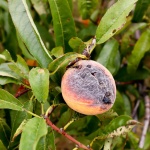
Requirements for soil and climatic conditions
The white swan copes well with dry periods, which makes it possible to grow the variety in regions with hot climates, and its frost resistance (-30º) explains the possibility of harvesting in the middle lane and in colder regions, excluding the northern regions.
